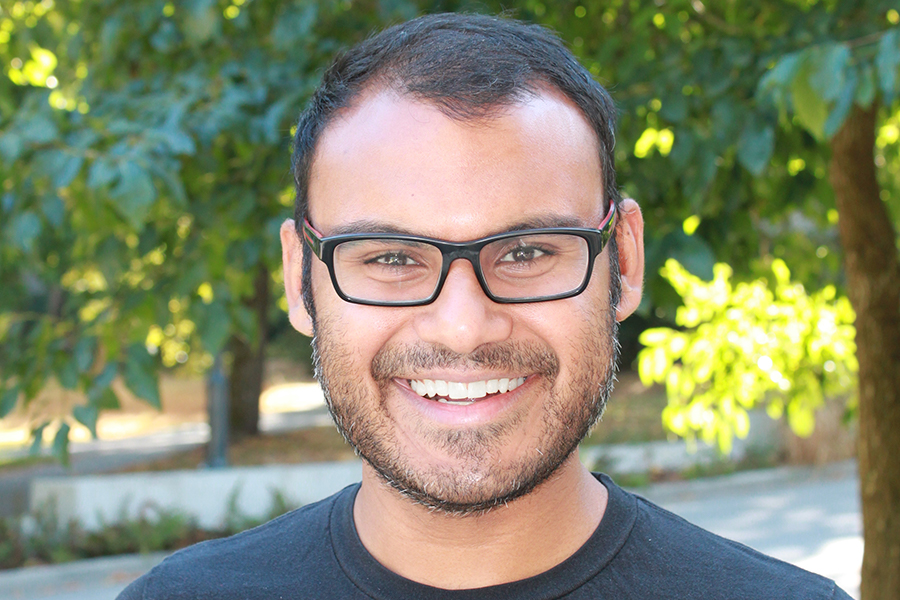
Alumnus Talks The Strength Behind Ph.D. in Neural Computation
By Stefanie Johndrow
Four years ago, Shreejoy Tripathy was graduating with a Ph.D. in neural computation from Carnegie Mellon University’s Center for the Neural Basis of Cognition’s (CNBC). Now, Tripathy is a postdoc in the Pavlidis Lab at the University of British Columbia, studying neuropsychiatric disorders such as schizophrenia and autism.
The CNBC is a joint center between the University of Pittsburgh and CMU that trains the next generation of neuroscientists through an interdisciplinary graduate and postdoctoral training program and fosters close collaborations between faculty. The center integrates Pitt’s strengths in basic and clinical neuroscience with CMU’s strengths in psychology, computer science, biological sciences, engineering and statistics.
What are your main research/academic interests?
I’m broadly interested in neuron diversity and how low-level neuron features like gene expression patterns and electrical properties give rise to high-level features like neural computations.
To support this work, I develop open source tools that help the neuroscience community manage and make sense of big neuroscience datasets. An example is NeuroElectro, http://neuroelectro.org/ a database I built during graduate work at CMU that uses scientific literature text-mining to organize information on the electrical properties of neuron types throughout the brain.
What is your role like as a post-doc at the University of British Columbia? What is the most exciting part for you?
My post-doc lab studies the genetic and biological basis of neuropsychiatric disorders, such as schizophrenia and autism. We are a “dry” lab, which means that rather than collect experimental data ourselves, we work with data collected by others. A key tool we use is meta-analysis, where we aggregate tens to hundreds of publically accessible data sets and try to identify points of consistency. A typical day for me includes writing code to analyze data, skyping with my experimental collaborators, writing and revising manuscripts and directing my lab’s team of undergraduates to help curate public datasets.
The most exciting part of research for me is the act of scientific discovery. I love the feeling of nervous anticipation I get right before I look at the results of a data analysis to see if my hypothesis is confirmed. It’s exciting knowing that I’m the first person to learn something about how the brain works, and I enjoy communicating that knowledge to others.
How did the Ph.D. in Neural Computation program best prepare you for the next steps of your career?
The strength of the Program in Neural Computation (PNC) is that it allows students to develop their own curriculum that merges the strengths of CMU (computer science and machine learning) with those of the University of Pittsburgh (hundreds of neuroscience faculty working on all areas of neuroscience). My current research on neuron diversity was directly shaped by CMU courses on statistics and machine learning as well Pitt courses on neuron modeling and theoretical neuroscience courses.
Why did you decide to attend the Neural Computation program for your PhD?
I joined the PNC foremost because of the strength of Nathan Urban’s lab. Urban was a CMU professor of biological sciences when I started, but has now moved his lab to Pitt, where he is a professor and vice chair of neurobiology and co-directs the CNBC. Urban’s lab was the perfect place for me to further my interests in the relationship between neuron biology and computation. I liked that his lab had ongoing collaborations with other theoretical neuroscience groups at the University of Pittsburgh, like Bard Ermentrout and Brent Doiron (both PNC faculty).
Second, I was impressed by how interdisciplinary the PNC was, for example, that computational students were encouraged to work directly with experimental colleagues (and vice versa). I was surprised that during my interview I got to speak with students from a number of programs including basic neurosciences, machine learning and psychology. I knew that I wanted my graduate work to bridge experimental and computational neuroscience and the PNC within the broader umbrella organization of the CNBC seemed an excellent place to do that.
Are there any professors or advisers who helped you reach certain feats?
Urban was a fantastic adviser, striking the balance between giving me advice and direction versus giving me the freedom to pursue the questions that I thought were the most interesting.
Because of the interdisciplinary nature of the PNC and the broader CNBC, it was very easy to get advice on my work from a number of faculty across both CMU and Pitt. For example, Rob Kass, CMU’s Maurice Falk Professor of Statistics and Computational Neuroscience and interim director of the CNBC and Cosma Shalizi, associate professor of statistics, regularly helped me with data analysis and statistical modeling issues. Conversations with Aryn Gittis and Sandra Kuhlman, both assistant professors of biological sciences, also helped guide my work. A number of Pitt professors were also vital, including Doiron, Ermentrout and Anne Marie Oswald, assistant professor of neuroscience.